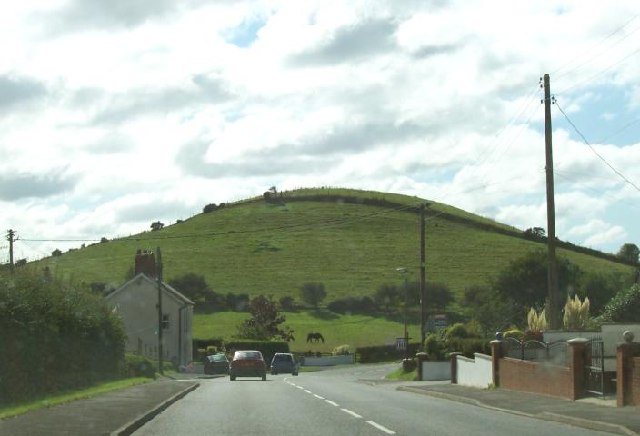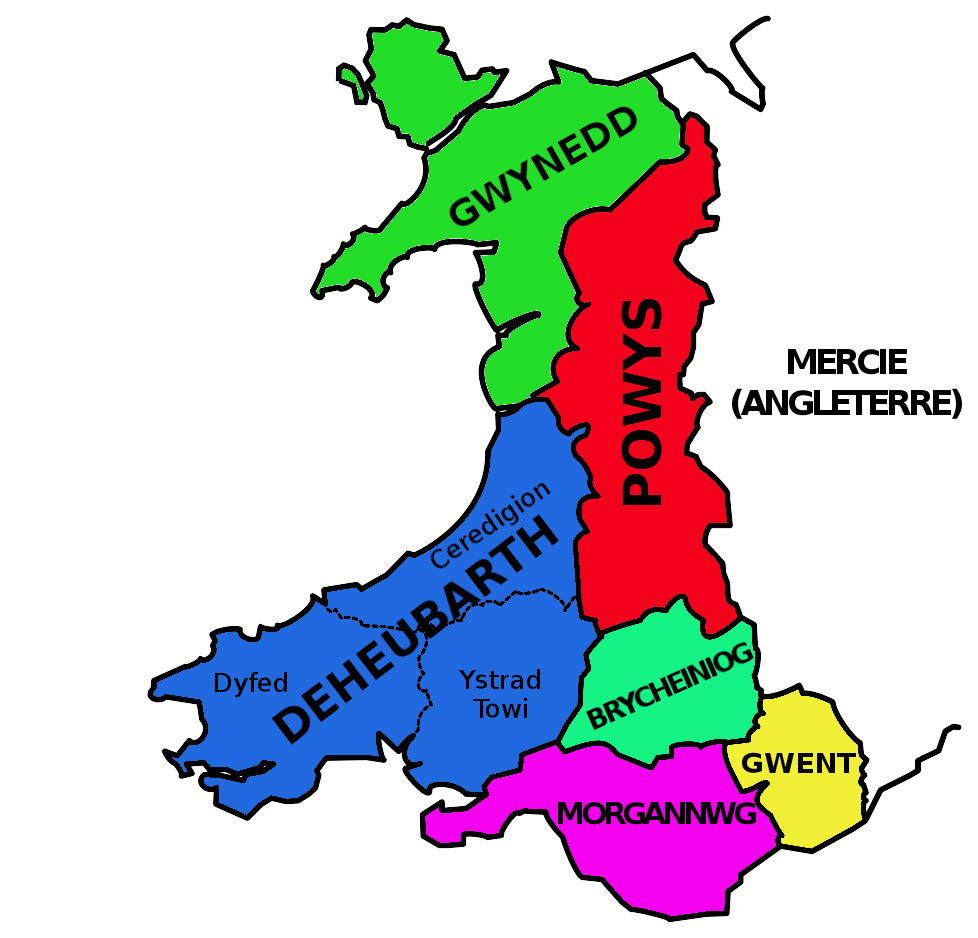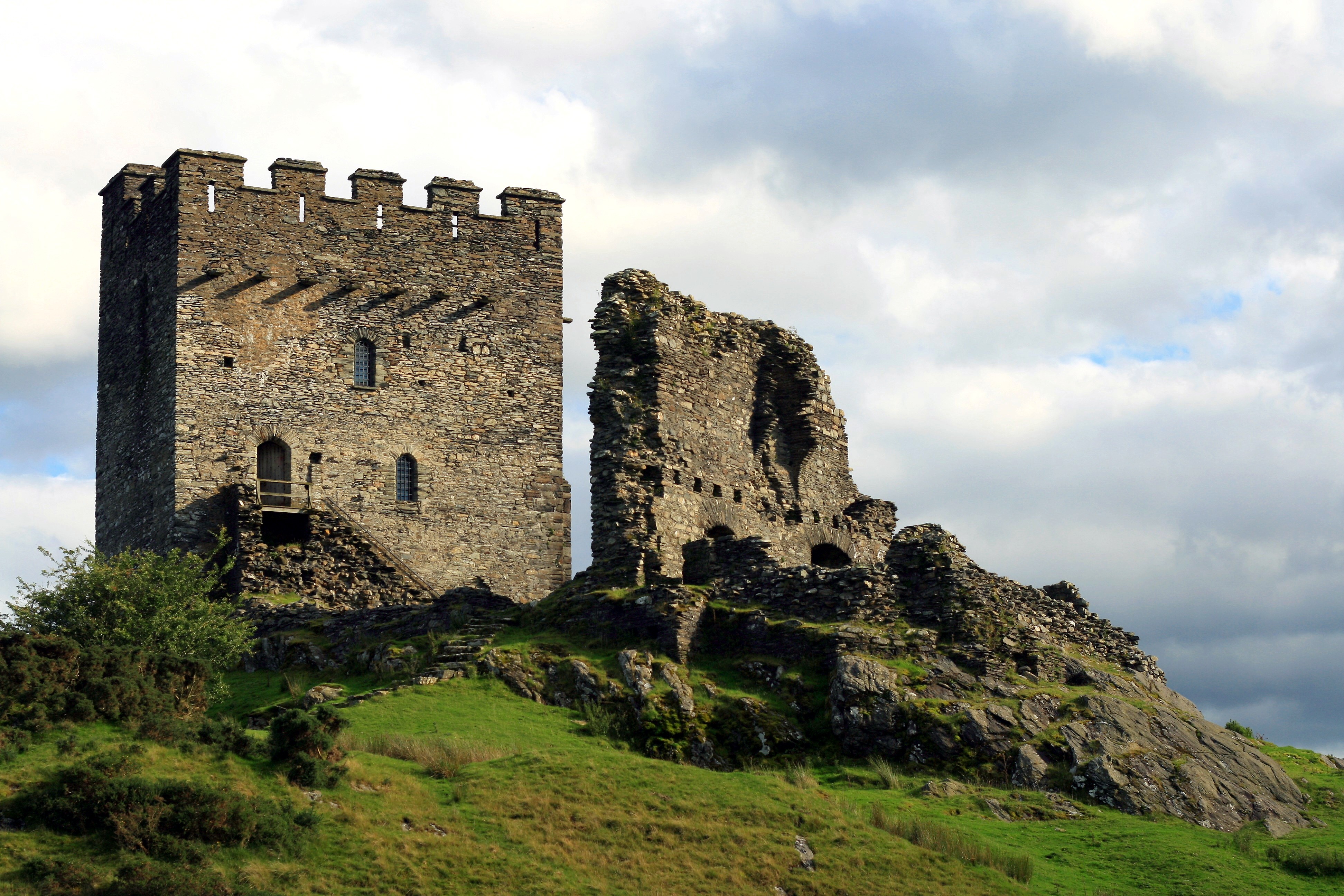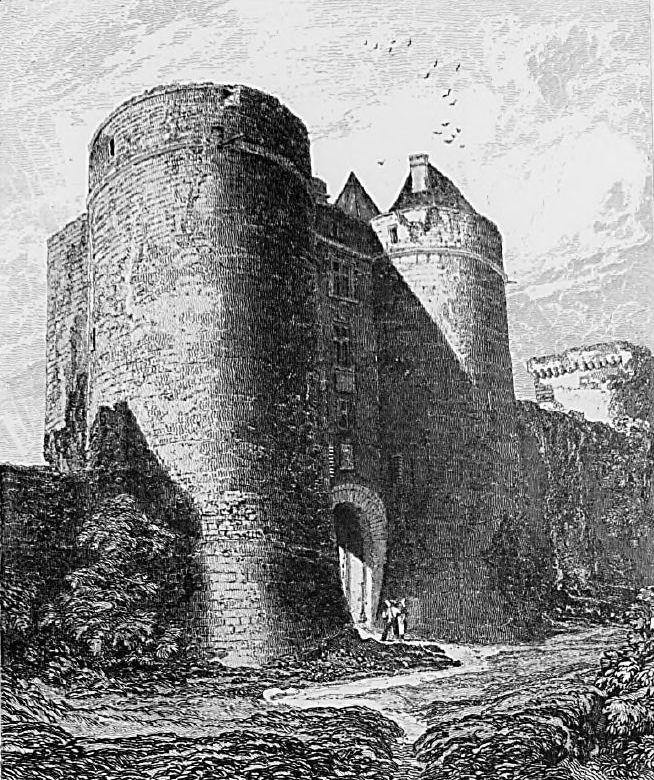|
Cardigan Castle
Cardigan Castle ( cy, Castell Aberteifi) is a castle overlooking the River Teifi in Cardigan, Ceredigion, Wales. It is a Grade I listed building. The castle dates from the late 11th-century, though was rebuilt in 1244. Castle Green House was built inside the castle walls in the early 1800s. After falling into disrepair the castle was restored in the early 2000s and opened to the public in 2015. It is owned by Ceredigion County Council and now includes a heritage centre and open-air concert facilities. History The first motte-and-bailey castle (ca.1093) was built a mile away from the present site, probably about the time of the founding of the town by Roger de Montgomery, a Norman baron. The forerunner of the present castle was built by Gilbert Fitz Richard Lord of Clare after the former was destroyed. The castle was handed down to Gilbert's son, Gilbert de Clare, 1st Earl of Pembroke in 1136. The same year, Owain Gwynedd led the defeat of the Norman rulers in the town of Ca ... [...More Info...] [...Related Items...] OR: [Wikipedia] [Google] [Baidu] |
Cardigan Castle (1128930)
Cardigan Castle ( cy, Castell Aberteifi) is a castle overlooking the River Teifi in Cardigan, Ceredigion, Wales. It is a Grade I listed building. The castle dates from the late 11th-century, though was rebuilt in 1244. Castle Green House was built inside the castle walls in the early 1800s. After falling into disrepair the castle was restored in the early 2000s and opened to the public in 2015. It is owned by Ceredigion County Council and now includes a heritage centre and open-air concert facilities. The castle's gardens are listed on the Cadw/ICOMOS Register of Parks and Gardens of Special Historic Interest in Wales. History The first motte-and-bailey castle (ca.1093) was built a mile away from the present site, probably about the time of the founding of the town by Roger de Montgomery, a Norman baron. In 1110, King Henry I of England took Cardigan from Prince Owain ap Cadwgan as a punishment, and gave the Lordship of Cardigan and the castle to Gilbert Fitz Richard. ... [...More Info...] [...Related Items...] OR: [Wikipedia] [Google] [Baidu] |
Cardigan, Ceredigion
Cardigan ( cy, Aberteifi, ) is both a town and a community in the county of Ceredigion, Wales. Positioned on the tidal reach of the River Teifi at the point where Ceredigion meets Pembrokeshire, Cardigan was the county town of the historic county of Cardiganshire. Cardigan is the second-largest town in Ceredigion. The largest town, Aberystwyth, is one of the two administrative centres; the other is Aberaeron. The settlement at Cardigan was developed around the Norman castle built in the late 11th or early 12th century. The castle was the location of the first National Eisteddfod in 1176. The town became an important port in the 18th century, but declined by the early 20th century owing to its shallow harbour. The castle underwent restoration in 2014. The population in 2001 was 4,203, reducing slightly to 4,184 at the 2011 census. Toponymy Cardigan is an anglicisation of the Welsh ' ("Ceredig's land"), the surrounding territory its Norman castle once controlled. Ceredig w ... [...More Info...] [...Related Items...] OR: [Wikipedia] [Google] [Baidu] |
Battle Of Crug Mawr
The Battle of Crug Mawr ('Great Barrow'), sometimes referred to as the Battle of Cardigan, took place in September or October 1136, as part of a struggle between the Welsh and Normans for control of Ceredigion, West Wales. The battle was fought near Penparc, northeast of Cardigan, probably on the hill now known as Banc-y-Warren; it resulted in a rout of the Norman forces, setting back their expansion in West Wales for some years. Background A Welsh revolt against Norman rule had begun in South Wales, where on 1 January 1136 the Welsh won a victory over the local Norman forces at the Battle of Llwchwr between Loughor and Swansea, killing about 500 of their opponents. Richard Fitz Gilbert de Clare, the Norman lord of Ceredigion, had been away from his lordship in the early part of the year. Returning to the borders of Wales in April, he ignored warnings of the danger and pressed on towards Ceredigion with a small force. He had not gone far when he was ambushed and killed by ... [...More Info...] [...Related Items...] OR: [Wikipedia] [Google] [Baidu] |
Rhys Gryg
Rhys Gryg ('Rhys the Hoarse') (died 1234), real name Rhys ap Rhys, also known as Rhys Fychan ('Rhys the Younger') was a Welsh prince who ruled part of the Kingdom of Deheubarth. Lineage Rhys was the fourth son of Rhys ap Gruffydd (The Lord Rhys) and his wife, Gwenllian, daughter of Madog ap Maredudd of Powys. Family feud He married Mathilde, the daughter of Richard de Clare, 3rd Earl of Hertford and Marcher Lord of Cardigan. Her brother-in-law was Richard, King of the Romans. In Rhys ap Gruffydd's old age he had a great deal of trouble keeping control of his sons, and a bitter feud broke out between Gruffydd ap Rhys II and Maelgwn ap Rhys. Rhys Gryg formed an alliance with Gruffydd against Maelgwn, then in 1195 joined with another brother, Maredudd, in a conspiracy against their father and captured Dinefwr Castle. Their father, however, retaliated by capturing both of them and imprisoning them in Ystrad Meurig Castle. Power play Rhys ap Gruffydd died in 1197 ... [...More Info...] [...Related Items...] OR: [Wikipedia] [Google] [Baidu] |
William Marshal, 2nd Earl Of Pembroke
William Marshal, 2nd Earl of Pembroke (French: ''Guillaume le Maréchal'') (11906 April 1231) was a medieval English nobleman and was one of Magna Carta sureties. He fought during the First Barons' War and was present at the Battle of Lincoln (1217) alongside his father William Marshal, 1st Earl of Pembroke, who led the English troops in that battle. He commissioned the first biography of a medieval knight to be written, called '' L'Histoire de Guillaume le Mareschal,'' in honour of his father''.'' Early life William was born in Normandy probably during the spring of 1190, the eldest son of William Marshal, 1st Earl of Pembroke, and his wife, Isabel de Clare, suo jure 4th Countess of Pembroke and Striguil. His early contract of marriage to Alice de Bethune in 1203 and his connections to Baldwin de Bethune the younger and the Aumale knight, Richard Siward, may indicate that he was at some time fostered with his father's ally, Baldwin, Count of Aumale. He was taken as hostage ... [...More Info...] [...Related Items...] OR: [Wikipedia] [Google] [Baidu] |
Deheubarth
Deheubarth (; lit. "Right-hand Part", thus "the South") was a regional name for the realms of south Wales, particularly as opposed to Gwynedd (Latin: ''Venedotia''). It is now used as a shorthand for the various realms united under the House of Dinefwr, but that Deheubarth itself was not considered a proper kingdom on the model of Gwynedd, Powys, or Dyfed is shown by its rendering in Latin as ''dextralis pars'' or as ''Britonnes dexterales'' ("the Southern Britons") and not as a named land. In the oldest British writers, ''Deheubarth'' was used for ''all'' of modern Wales to distinguish it from ''Hen Ogledd'' ('' Y Gogledd''), the northern lands whence Cunedda and the Cymry originated. History Deheubarth was united around 920 by Hywel Dda out of the territories of Seisyllwg and Dyfed, which had come into his possession. Later on, the Kingdom of Brycheiniog was also added. Caerleon was previously the principal court of the area, but Hywel's dynasty fortified and built up a ... [...More Info...] [...Related Items...] OR: [Wikipedia] [Google] [Baidu] |
Aberdyfi
Aberdyfi (), also known as Aberdovey ( ), is a village and community in Gwynedd, Wales, located on the northern side of the estuary of the River Dyfi. The population of the community was 878 at the 2011 census. The electoral ward had a larger population of 1,282 and includes the community of Pennal. Founded by shipbuilding, Aberdyfi is now a seaside resort with a high quality beach. The centre is on the river and seafront, around the original harbour, jetty and beach; it stretches back from the coast and up the steep hillside in the midst of typical Welsh coastal scenery of steep green hills and sheep farms. Penhelig railway station ( cy, Penhelyg) is in the eastern part of the village. Being less than from the West Midlands, the area is popular with tourists. 43.3% of houses in the village are holiday homes. The village is located within the Snowdonia National Park. In the 2011 census, 38.5% of the population of Aberdyfi ward identified themselves as Welsh (or combine ... [...More Info...] [...Related Items...] OR: [Wikipedia] [Google] [Baidu] |
Llywelyn The Great
Llywelyn the Great ( cy, Llywelyn Fawr, ; full name Llywelyn mab Iorwerth; c. 117311 April 1240) was a King of Gwynedd in north Wales and eventually " Prince of the Welsh" (in 1228) and "Prince of Wales" (in 1240). By a combination of war and diplomacy he dominated Wales for 45 years. During Llywelyn's childhood, Gwynedd was ruled by two of his uncles, who split the kingdom between them, following the death of Llywelyn's grandfather, Owain Gwynedd, in 1170. Llywelyn had a strong claim to be the legitimate ruler and began a campaign to win power at an early age. He was sole ruler of Gwynedd by 1200 and made a treaty with King John of England that year. Llywelyn's relations with John remained good for the next ten years. He married John's natural daughter Joan in 1205, and when John arrested Gwenwynwyn of Powys in 1208, Llywelyn took the opportunity to annex southern Powys. In 1210, relations deteriorated, and John invaded Gwynedd in 1211. Llywelyn was forced to seek terms and to ... [...More Info...] [...Related Items...] OR: [Wikipedia] [Google] [Baidu] |
William Marshal, 1st Earl Of Pembroke
William Marshal, 1st Earl of Pembroke (1146 or 1147 – 14 May 1219), also called William the Marshal (Norman French: ', French: '), was an Anglo-Norman soldier and statesman. He served five English kings— Henry II, his sons the "Young King" Henry, Richard I, and John, and finally John's son Henry III. Knighted in 1166, he spent his younger years as a knight errant and a successful tournament competitor; Stephen Langton eulogised him as the "best knight that ever lived." In 1189, he became the ''de facto'' earl of Pembroke through his marriage to Isabel de Clare, though the title of earl was not officially granted until 1199 during the second creation of the Pembroke earldom. In 1216, he was appointed protector for the nine-year-old Henry III, and regent of the kingdom. Before him, his father's family held a hereditary title of Marshal to the king, which by his father's time had become recognised as a chief or master Marshalcy, involving management over other Marsha ... [...More Info...] [...Related Items...] OR: [Wikipedia] [Google] [Baidu] |
John Of England
John (24 December 1166 – 19 October 1216) was King of England from 1199 until his death in 1216. He lost the Duchy of Normandy and most of his other French lands to King Philip II of France, resulting in the collapse of the Angevin Empire and contributing to the subsequent growth in power of the French Capetian dynasty during the 13th century. The baronial revolt at the end of John's reign led to the sealing of , a document considered an early step in the evolution of the constitution of the United Kingdom. John was the youngest of the four surviving sons of King Henry II of England and Duchess Eleanor of Aquitaine. He was nicknamed John Lackland because he was not expected to inherit significant lands. He became Henry's favourite child following the failed revolt of 1173–1174 by his brothers Henry the Young King, Richard, and Geoffrey against the King. John was appointed Lord of Ireland in 1177 and given lands in England and on the continent. He unsuccessfu ... [...More Info...] [...Related Items...] OR: [Wikipedia] [Google] [Baidu] |
Gruffydd Ap Rhys II
Gruffydd ap Rhys II (died 25 July 1201) was a prince of Deheubarth in south-west Wales. Lineage He was the son of Rhys ap Gruffydd (The Lord Rhys) and grandson of Gruffydd ap Rhys. Gruffydd was the eldest son of Rhys ap Gruffydd by his wife Gwenllian, daughter of Madog ap Maredudd prince of Powys. Rhys intended Gruffydd to be his main heir, and in 1189 he married Maud de Braose, the daughter of Maud de St Valery and of William de Braose. They had two sons, Rhys and Owain. Family feud In Rhys' last years a feud developed between Gruffydd and his brother Maelgwn ap Rhys, both supported by some of their other brothers. In 1189 Rhys was persuaded to imprison Maelgwn, and he was given into Gruffydd's keeping at Dinefwr. Gruffydd handed him over to his father in law, William de Braose. In 1192 Rhys secured Maelgwn's release, but by now he and Gruffydd were bitter enemies. In 1194 Maelgwn and another brother Hywel defeated their father and imprisoned him, though he was later re ... [...More Info...] [...Related Items...] OR: [Wikipedia] [Google] [Baidu] |
Maelgwn Ap Rhys
Maelgwn ap Rhys (c. 1170–1230) was prince of part of the kingdom of Deheubarth in south west Wales. Maelgwn was the son of Rhys ap Gruffydd (''The Lord Rhys'') by his wife Gwenllian ferch Madog, daughter of Madog ap Maredudd prince of Powys. He appears in the historical record for the first time helping at the siege of Tenby in 1187. In 1188 when Baldwin, Archbishop of Canterbury and Giraldus Cambrensis travelled through Wales raising men for the Third Crusade, Maelgwn is recorded as having taken the cross, though there is no record that he actually went on the crusade. Maelgwn was described as being short in stature and a turbulent character, who caused his father much trouble in his later years and maintained a lengthy feud with his brother Gruffydd. He was kept a prisoner from 1189 to 1192. In 1194 he and his brother Hywel defeated their father in battle and imprisoned him in Nevern castle, though he was later released by Hywel. Maelgwn was in exile when Rhys died in 1197. G ... [...More Info...] [...Related Items...] OR: [Wikipedia] [Google] [Baidu] |
.jpg)







